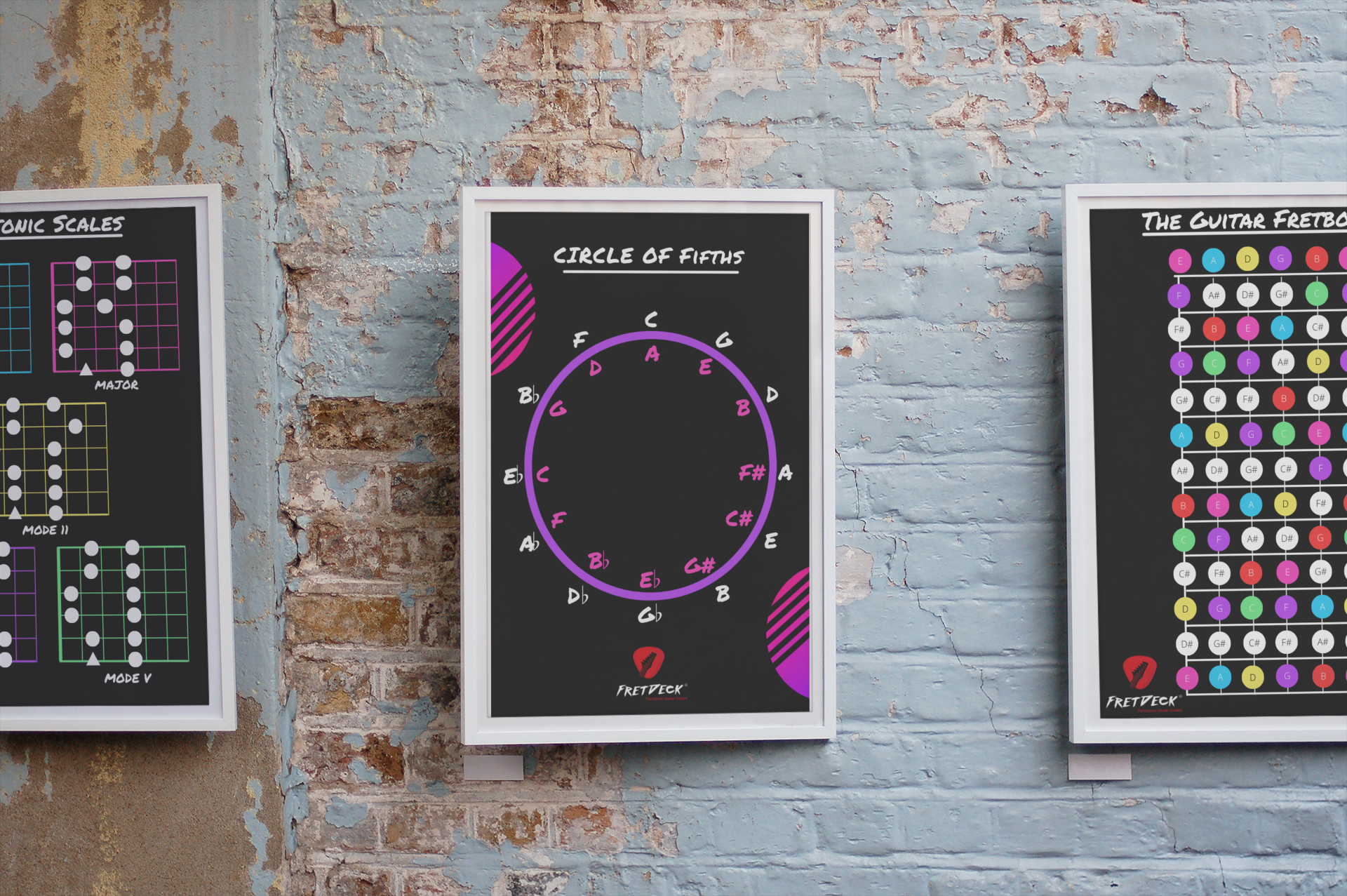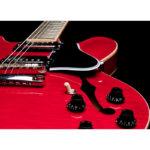The guitar scales pentatonic are one of the most fundamental and versatile tools in a guitarist’s arsenal. Used extensively in blues, rock, and many other genres, this five-note scale provides a wealth of melodic possibilities and is particularly friendly to beginners due to its simple, yet powerful structure. In this article, we’ll delve into how to integrate the five pentatonic patterns across the guitar fretboard, and explore effective memorization techniques. We’ll also look at examples from legendary blues and rock guitarists to illustrate the practical application of these scales.
Understanding the Pentatonic Scale
The pentatonic scale consists of five notes per octave, unlike the more common seven-note scales (like the major or minor scales). There are two primary types of pentatonic scales: the major pentatonic and the minor pentatonic. Here’s a quick overview of both:
- Major Pentatonic Scale: Derived from the major scale, the major pentatonic removes the fourth and seventh degrees. For example, in the key of C major, the notes would be C, D, E, G, and A.
- Minor Pentatonic Scale: Derived from the natural minor scale, the minor pentatonic removes the second and sixth degrees. For example, in the key of A minor, the notes would be A, C, D, E, and G.

Download FREE Guitar Charts!
We have 27 FREE guitar charts to help you learn the guitar fretboard. Learn How to play chords and scales with these free resources.
Free Guitar Resources
The Five Pentatonic Patterns; Guitar Scales Pentatonic
To fully exploit the pentatonic scales, guitarists learn to play them in five distinct patterns or “boxes” that cover the entire fretboard. Each pattern connects to the next, allowing for seamless transitions and a full range of expression.
Pattern 1: The E Shape
The first pattern, often referred to as the “E shape” because of its resemblance to the open E chord, is the most commonly used and is typically the starting point for many guitarists.
A Minor Pentatonic (Pattern 1)
e|----------------5-8|
B|-------------5-8---|
G|---------5-7-------|
D|-----5-7-----------|
A|-5-7---------------|
E|-------------------|
Pattern 2: The D Shape
This pattern connects directly to Pattern 1 and is named after the D chord shape.
A Minor Pentatonic (Pattern 2)
e|----------------8-10|
B|-------------8-10---|
G|---------7-9--------|
D|-----7-10-----------|
A|-7-10---------------|
E|--------------------|
Pattern 3: The C Shape
Pattern 3 corresponds to the C chord shape and links with Pattern 2.
A Minor Pentatonic (Pattern 3)
e|----------------10-12|
B|-------------10-13---|
G|---------9-12--------|
D|-----10-12-----------|
A|-10-12---------------|
E|---------------------|
Pattern 4: The A Shape
This pattern aligns with the A chord shape, following Pattern 3.
A Minor Pentatonic (Pattern 4)
e|----------------12-15|
B|-------------13-15---|
G|---------12-14-------|
D|-----12-14-----------|
A|-12-15---------------|
E|---------------------|
Pattern 5: The G Shape
Finally, Pattern 5, corresponding to the G chord shape, completes the cycle and connects back to Pattern 1.
A Minor Pentatonic (Pattern 5)
e|----------------15-17|
B|-------------15-17---|
G|---------14-17-------|
D|-----14-17-----------|
A|-15-17---------------|
E|---------------------|
Integrating the Patterns Across the Fretboard
Learning to connect these patterns across the fretboard enables fluid movement and improvisation. We have a guitar tool called the FretDeck that will help you learn all pentatonic scale patterns. Here are steps to help integrate these patterns effectively:
Step 1: Master Each Pattern Individually
Begin by practicing each pattern until you can play them without looking at a fretboard diagram. Focus on muscle memory and ensure you can transition smoothly between the notes.
Step 2: Practice Linking Adjacent Patterns
Once you’re comfortable with each pattern individually, start practicing the transitions between them. For example, move seamlessly from Pattern 1 to Pattern 2 by connecting the notes they share.
Step 3: Horizontal and Vertical Integration
Practice moving both horizontally (up and down the neck) and vertically (across the strings) to build a more comprehensive understanding of how the patterns link together.
Step 4: Use Scale Sequences
Scale sequences, such as playing the pentatonic scale in thirds, can help you understand the intervals and improve your dexterity. Here’s an example of playing the A minor pentatonic scale in thirds in Pattern 1:
e|----------------5-8-|
B|-------------5-8----|
G|---------5-7--------|
D|-----5-7------------|
A|-5-7----------------|
E|--------------------|
Play: A-C, C-D, D-E, E-G, G-A, etc.
Step 5: Improvise with Backing Tracks
Use backing tracks to practice improvisation. Start by using just one pattern, then gradually incorporate adjacent patterns. This will help you understand the musical context of the scales and develop your ear for creating melodies.
Memorizing Pentatonic Scales on the Guitar Fretboard
Memorization is a crucial part of mastering the pentatonic scales. Here are some effective strategies to help you remember the patterns and their positions:
Visualizing the Fretboard
One of the most effective ways to memorize the fretboard is by visualizing it as a series of connected patterns. Imagine each pattern as a piece of a puzzle that fits together to cover the entire fretboard.
Using Mnemonics
Mnemonics can be incredibly helpful in remembering the notes and patterns. For instance, create a memorable phrase for the sequence of notes in each pattern. For the A minor pentatonic Pattern 1, you could use: “All Cool Dogs Eat Grass” (A, C, D, E, G).
Playing Along with Songs
Playing along with your favorite songs that use pentatonic scales can reinforce your memory. For example, many classic blues and rock songs rely heavily on the pentatonic scales. Jamming along to tracks by artists like Eric Clapton, Jimi Hendrix, or Stevie Ray Vaughan can be both fun and educational.
Practical Applications with Blues and Rock Guitarists
To truly appreciate the power of the pentatonic scale, let’s explore how some legendary blues and rock guitarists have utilized it in their playing.
Jimi Hendrix
Jimi Hendrix is renowned for his innovative use of the pentatonic scale. In songs like “Voodoo Child (Slight Return)”, Hendrix masterfully blends the minor pentatonic scale with expressive bends, slides, and double-stops. He often used the E minor pentatonic scale (since the song is in E minor) to create his iconic solos.
E Minor Pentatonic (Pattern 1)
e|----------------12-15|
B|-------------12-15---|
G|---------12-14-------|
D|-----12-14-----------|
A|-12-14---------------|
E|---------------------|
Eric Clapton
Eric Clapton’s work with Cream and his solo career is a treasure trove of pentatonic mastery. In the song “Crossroads,” Clapton extensively uses the A minor pentatonic scale. His solos often transition smoothly between different patterns, showcasing his deep understanding of the fretboard.
A Minor Pentatonic (Pattern 1) Example in “Crossroads”
e|----------------5-8-|
B|-------------5-8----|
G|---------5-7--------|
D|-----5-7------------|
A|-5-7----------------|
E|--------------------|
Stevie Ray Vaughan
Stevie Ray Vaughan’s fiery playing style is heavily rooted in the pentatonic scale. In “Pride and Joy,” Vaughan uses the E minor pentatonic scale to craft his powerful solos. He frequently incorporates the “blue note” (the flattened fifth) to add a bluesy feel to his playing.
E Minor Pentatonic with Blue Note
e|----------------12-15|
B|-------------12-15---|
G|---------12-14-15----|
D|-----12-14-----------|
A|-12-14---------------|
E|---------------------|
Conclusion
Guitar scales pentatonic are a foundational element in the world of guitar playing. By mastering the five pentatonic patterns and learning to connect them across the fretboard, you can unlock a vast array of creative possibilities. The techniques outlined in this article, combined with inspiration from blues and rock legends, will help you develop your improvisational skills and deepen your understanding of guitar scales pentatonic. Remember, consistent practice and a curious mind are your best allies in this musical journey. So grab your guitar, dive into the patterns, and let the magic of the pentatonic scale unfold.

Download The FretDeck & Pentatonic Secrets Course!
Download Our Course









